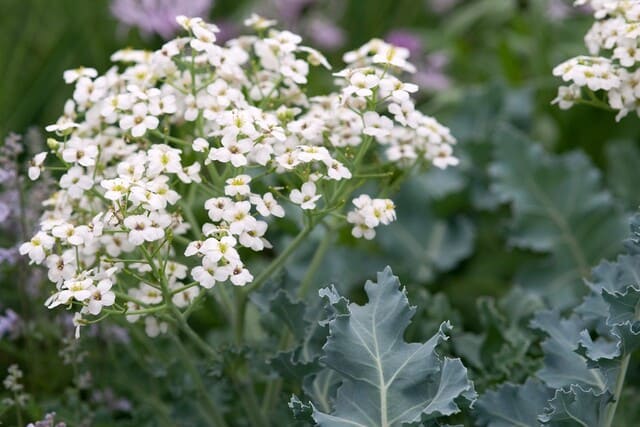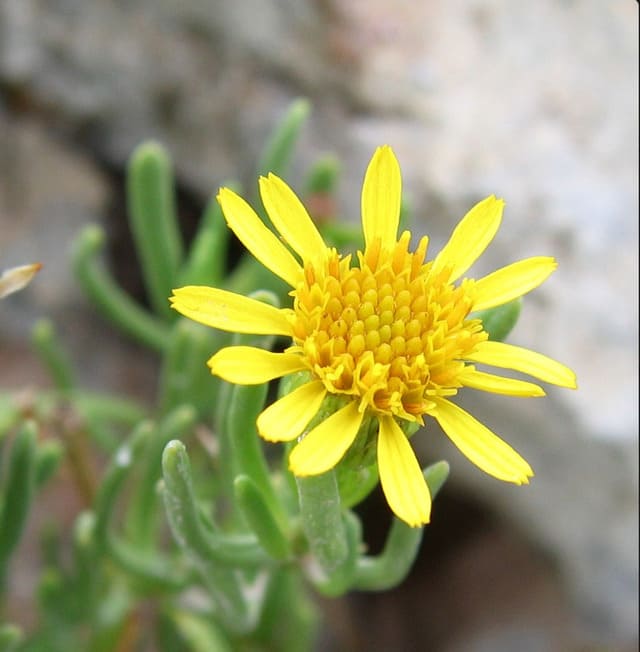Table of Contents
Food-inspired cosmetics have flood the market for several years now. Grapeseed oil, coconut milk, cacao butter, wheat extracts, berries extracts and other superfood charged in minerals and vitamins have popped up in all cosmetic categories. These ingredients have known such a craze because they reassure the consumers: they sound familiar, healthy as the food consumers eat, and make cosmetics more natural. With the continuous seek of healthier lifestyle, the food-inspired beauty seems to have some days ahead. Let’s discover a new wave of original & remarkable food-inspired ingredients full of healthy, but also sustainable promises.
THE VEGETABLES OF THE FUTURE
In the late 20th century, one observation was made: our food became less diverse and less healthy than the food of our ancestors. The loss of diversity of cereals and vegetables available to consumers was identified as a source of impoverishment of our food and considered one of today’s most serious environmental concerns by the Food and Agriculture Organization. A quest for rediscovering old vegetables, fallen out of favor, was then initiated and led to the reintroduction into cultivation of forgotten species.
At the same period, concerns rose about the resistance of plant cultures facing more and more difficult climate conditions like dryness in hot environments or floodings in coastal areas.
One plant category then stepped out and seemed to be the ideal candidate for diversifying our food and being more resistant to stressful culture conditions: the halophytic plants. “Halophytic” is a category of plants able to survive in a saline environment like coastal areas exposed to seawater. This category of plants were then considered like the vegetables of the future.
WHO ARE THEY? AND WHERE TO SOURCE THEM?

All halophytic plants are not edible. However, if we look at historical sources, we can identify several plants known for their traditional (sometimes forgotten) food usage. We find several plants with high potential like the Buck’s-horn plantain, the Sea Fennel, the Sea Holly, the Spiny chicory, the Pepperwort etc. Many of these plants are Eurasian plants found commonly in Europe (Western as well as Eastern and Southern Europe) and on the Mediterranean rim.
In France, Brittany is an important territory for agriculture and is even the leading region for the production of vegetables. With its numerous coastal areas exposed to seawater, it is an ideal incubator for halophytic plant cultivation and diversification of the crops.Thanks to the potential of this territory, could unveil the power of these “seaside vegetables of the future” for cosmetic applications. Five vegetables are now part of our offer for remarkable food-inspired cosmetics.
1. SEA KALE, THE HIGH VALUED DELICACY

The Sea Kale (Crambe Maritima) is a perennial plant that is known for its edible qualities and ornamental value. It is native to coastal regions of Europe and is part of the Brassicaceae family. Sea kale has been used historically for its nutritional value, particularly on long sea voyages to prevent scurvy due to its vitamin C content The plant is characterized by its shoots, which are similar to asparagus, and its large leaves that can be prepared like spinach or regular garden kale. The young shoots are typically blanched to keep them sweet and tender, and the leaves develop a distinct kale flavor, suitable for hearty stews.Sea kale is also valued for its attractive, fragrant blooms, which are edible as well.
SEA KALE EXTRACTS
Sea kale extracts, derived from the plant Crambe Maritima, are rich in antioxidants, vitamins, and minerals, and are commonly used in skincare and haircare products due to their numerous benefits.
In skincare, sea kale extracts are known for their hydrating properties. They act as natural humectants, attracting and retaining moisture in the skin, leaving it feeling soft, smooth, and supple.These extracts also contain compounds that stimulate collagen production, which can help to firm and plump the skin over time, improving the appearance of fine lines and wrinkles.Furthermore, sea kale extracts have anti-inflammatory properties that can help to reduce redness, making them a great choice for those with sensitive or reactive skin.They are used in various skincare products, including facial serums, masks, and sunscreens.
In haircare, sea kale extracts are known for their antioxidant properties, which protect the hair against oxidation, enhancing shine and smoothness.They are used in hair and scalp care products.
2.SEA BEET, THE ANCESTOR AND THE GUARDIAN OF THE BEET FAMILY

Sea beet, also called the Wild Spinach,scientifically known as Beta vulgaris subsp. maritima, is a perennial plant native to the coasts of Europe, northern Africa, and southern Asia. It belongs to the Amaranthaceae family and is the wild ancestor of common vegetables such as beetroot and sugar beet.
Sea beet has been used for centuries for its nutritional and medicinal properties. It has a spinach-like flavor and its leaves can be consumed raw or cooked. The roots of the sea beet are also edible and have a sweet taste, similar to sweet potato.Nowadays, the genetic resource of the Sea Beet is considered precious, containing more resistance genes (to stressful conditions like challenging climate conditions or biological stress) and is used for breeding of sugar beet or other cultivated forms so that their cultivations become less vulnerable to aggressions.
SEA BEET EXTRACTS
Sea beet extracts, derived from the plant Beta vulgaris subsp. maritima, are known for their rich content of vitamins, minerals, and antioxidants. They have been used in various applications, particularly in skincare and haircare products, due to their numerous benefits.In skincare, sea beet extracts are known for their antioxidant and anti-inflammatory properties. In haircare, sea beet extracts are used for their conditioning benefits.
3. GOLDEN SAMPHIRE, THE TONIC REMEDY

Golden Samphire (Inula crithmoides) is a plant native to Western Europe and the Mediterranean region. The young shoots, leaves, and flower buds of this plant are edible and were traditionally pickled or cooked, most often used as a relish. The roots of this plant have also been used as a tonic in Lebanese folk medicine.
GOLDEN SAMPHIR EXTRACTS
INULA HC is an oil-soluble extract of the Golden Samphire demonstrating strong antioxidant properties.
In terms of haircare, Golden Samphire extract has been shown to significantly replenish hair lipids (+73% total lipids and + 87% polar lipids, tested on keratinocyte cell cultures). It also enhances hair fiber properties, improving shine, softness, and color uptake when tested in a coloring shampoo. Furthermore, it stimulates the renewal of the hair’s protective lipidic barrier, which can contribute to hair growth and protection against oxidative stress
For skincare, Golden Samphire extract has soothing properties, reducing skin reactivity by 43% according to a 28-day study. It also offers cell protection benefits to slow down ageing processes. The extract INULA SC has been found to protect and boost collagen for a firming effect on the skin.
4. SEA FENNEL, THE FLAVORING “REFRESHING”PLANT

Sea Fennel (Crithmum maritimum L.) is a perennial, strongly aromatic herb that grows spontaneously on cliffs, piers, gravel beaches, and rocky or sandy shores in the marine breeze. It is widespread in the coastal areas of Southern and Western European countries, along the coasts of the Mediterranean Sea, North America, Central and Western Asia.
Sea Fennel has been used since ancient times in cuisine and folk medicine. It is known for its good sensory traits, owed to its high essential oils content.It is commonly used in salads, soups, and seafood dishes. It can also be lightly boiled and then drizzled with olive oil and vinegar for a simple side dish.
SEA FENNEL EXTRACT
Sea fennel extracts, derived from the plant Crithmum maritimum L., are known for their rich content of vitamins, minerals, and antioxidants, and have a variety of applications in skincare and nutrition
In skincare, sea fennel extracts are valued for their ability to encourage the body’s collagen defense system, which helps protect the skin’s natural smoothness and firmness. These extracts are known to energize and rejuvenate the skin, unclog pores, boost collagen, reduce fine lines, and speed up cell turnover, enabling the skin to regain its youth and vitality. Sea fennel extract is also known to improve radiance and tone, making it a beneficial ingredient in serums and other skincare products.
5. SEA HOLLY, A FORBIDDEN FRUIT

The Sea Holly (Eryngium maritimum) has a long tradition of consumption.The fleshy roots were eaten cooked or candied. The roots have a sweet taste and aroma comparable to that of carrots, and after heat treatment to parsnips and chestnuts.They were popular especially in England. Eryngium maritimum has been grown in gardens since mediaeval times, for example the gardens of the Westminster Abbey, in private gardens since at least 1525, and in botanical gardens, since c. 1683 in the Physic Garden of Edinburgh. In Elizabethan times, it was even believed to be a strong aphrodisiac.
In many coastal regions though, Sea Holly is one of the rarest and most threatened plant species and is therefore listed in Red Data Books (e.g. in Lithuania, Estonia, Norway, Israel, along the Russian Black Sea). Since the beginning of the 20th century, it has been threatened with local extinctions in some European countries and it has been protected by law
SEA HOLLY EXTRACT
Sea Holly extract is used in cosmetics for its potential anti-aging properties and its ability to improve skin firmness. Some products, such as Eryngium Maritimum, utilize plant cell technology derived from Sea Holly to promote skin renewal. Other cosmetic benefits of Sea Holly extract include reinforcing the skin’s moisture barrier, targeting the first visible signs of aging, and fortifying the skin’s natural defenses. It also boosts skin radiance and luminosity by stimulating and protecting the skin’s natural defenses.
THE IDEAL SOLUTION FOR REMARKABLE NEW FOOD-INSPIRED COSMETICS
The concerns about crop diversity & sustainability have started to gain popularity among consumers. On the tables, “old” or even “forgotten” vegetables have reappeared. Driven by health concerns, consumers began rediscovering old local, traditional, healthy and considered authentic vegetables. Chefs and consumers make them fashionable again and more and more websites show how to use them. The quintet of seaside garden vegetables, the Sea Kale, the Wild Spinach, the Golden Samphire, the Sea Fennel and the Sea Holly will align healthiness, sustainable & cosmetic benefit expectations of consumers.







